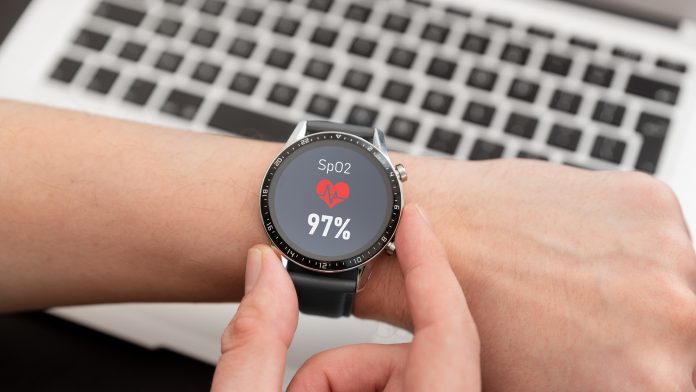
A new study reveals that a smartwatch can track the progression of COVID-19 symptoms and can even indicate how sick you become.
The research team from the University of Michigan examined the effects of COVID-19 with six factors derived from smartwatch heart rate data. The researchers noted that this method could be used to detect other diseases such as influenza and track diseases from home or when medical resources are minimal, such as in developing countries.
The study was published in Cell Reports Medicine.
Smartwatch data and COVID-19 symptoms
The team followed university students and medical interns throughout the United States and discovered signals embedded in heart rate data indicating when individuals were infected with COVID-19 and how ill they became.
The data illuminated that infected individuals experienced an increase in heart rate per step after symptom onset and those experiencing a cough had a much higher heart rate per step than those without a cough.
“We found that COVID dampened biological timekeeping signals, changed how your heart rate responds to activity, altered basal heart rate and caused stress signals,” said Daniel Forger, professor of mathematics and research professor of computational medicine and bioinformatics. “What we realised was knowledge of physiology, how the body works and mathematics can help us get more information from these wearables.”
The researchers found that these measures were significantly altered and could show symptomatic versus healthy periods in the smartwatch wearers’ lives.
“There’s been some previous work on the understanding disease through wearable heart rate data, but I think we really take a different approach by focusing on decomposing the heart rate signal into multiple different components to take a multidimensional view of heart rate,” said Caleb Mayer, a doctoral student in mathematics.
“All of these components are based on different physiological systems. This really gives us additional information about disease progression and understanding how the disease impacts these different physiological systems over time.”
Student health and well-being
Participants were drawn from the 2019 and 2020 cohorts of the Intern Health Study, a multisite cohort study that follows physicians across several institutes in their first year of residency. Researchers used information from the Roadmap College Student Data Set, a study that examined student health and well-being during the 2020-21 academic year using wearable data from Fitbits, self-reported COVID-19 diagnoses and symptom information, and publicly available data.
For the analysis, the researchers included individuals who reported a COVID-19 positive test result with their symptoms and had a smartwatch with data from 50 days before symptoms occurred to 14 days after. In all, the researchers used data from 43 medical interns and 73 undergraduate and graduate students.
The results found:
- The heart rate increase per step, a measure of cardiopulmonary dysfunction, increased after symptom onset.
- Heart rate per step was significantly higher in participants who reported a cough.
- Circadian phase uncertainty, the body’s inability to time daily events, increased around COVID symptom onset. Because this measure relates to the strength and consistency of the circadian component of the heart rate rhythm, this uncertainty may correspond to early signs of infection.
- Daily basal heart rate tended to increase on or before symptom onset. The researchers hypothesised this was because of fever or heightened anxiety.
- Heart rate tended to be more correlated around symptom onset, which could indicate the effects of the stress-related hormone adenosine.
The researchers used an algorithm that was originally developed to estimate the daily circadian phase from smartwatch heart rate and step data. They looked at the baseline period of eight to 35 days before COVID-19 symptom onset and an analysis period defined as seven to 14 days around COVID-19 symptom onset. The researchers hope these methods, once tested further, could improve the pre-detection of COVID-19 with wearable devices like a smartwatch.
“The global outbreak of the SARS-CoV-2 virus imposed important public health measures, which impacted our daily lives,” said Sung Won Choi, associate professor of paediatrics. “However, during this historical event in time, mobile technology offered enormous capabilities — the ability to monitor and collect physiological data longitudinally from individuals noninvasively and remotely.
“We were amazed at the U-M students’ willingness and desire to participate in this study, which was all done remotely, from recruitment to enrolment and onboarding. The work reported by Mayer and our team was really made possible not only through wearables sensors themselves, but the convergence of novel data analytics, remarkable advances in technology and computing power, and ‘team science’ intersection across research teams.”










